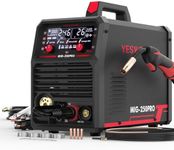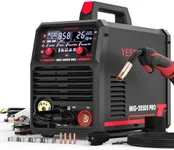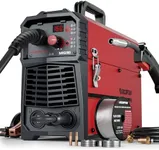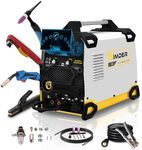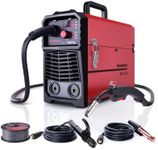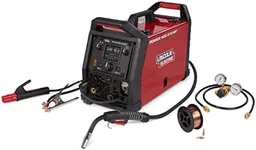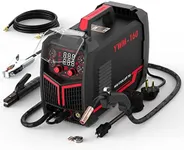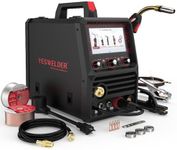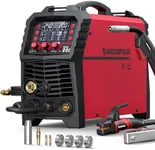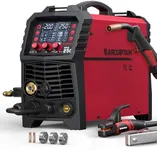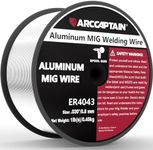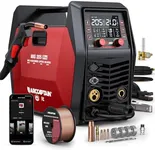Buying Guide for the Best Welding Machines
Choosing the right welding machine can make your projects easier, safer, and more enjoyable. The best machine for you depends on what kind of welding you plan to do, the materials you'll work with, and your experience level. Understanding the main features and specifications will help you match a machine to your needs, ensuring you get reliable results and a tool that grows with your skills.Welding Process Type (MIG, TIG, Stick, Multi-process)The welding process type refers to the method the machine uses to join metals. MIG (Metal Inert Gas) is user-friendly and good for beginners, ideal for quick jobs and thin metals. TIG (Tungsten Inert Gas) offers more precision and is great for detailed or delicate work, especially on thin or exotic metals. Stick welding is robust and works well outdoors or on rusty materials, making it popular for heavy-duty tasks. Multi-process machines can handle more than one type, offering flexibility. To choose, think about the materials and projects you’ll tackle most often—if you want versatility, a multi-process machine is a good fit, but if you have a specific need, pick the process that matches your main tasks.
Input Power (Voltage)Input power is the voltage the machine needs to operate, usually 110/120V (standard household) or 220/240V (industrial). Lower voltage machines are portable and suitable for light work at home, while higher voltage machines handle thicker materials and longer jobs. Some machines can switch between voltages. Consider where you’ll use the machine—if you’re working in a garage or home workshop, standard voltage is fine, but for bigger projects or job sites, higher voltage may be necessary.
Amperage RangeAmperage range tells you how much power the machine can deliver, which affects the thickness of metal you can weld. Lower amperage is for thin metals and delicate work, while higher amperage is needed for thick or heavy materials. Machines with a wide amperage range are more versatile. Think about the types of materials and thicknesses you’ll work with most—if you need to weld a variety, a broader range is helpful, but for specific tasks, match the amperage to your usual material thickness.
Duty CycleDuty cycle is the amount of time a machine can weld continuously in a 10-minute period before it needs to cool down. For example, a 30% duty cycle at 100 amps means you can weld for 3 minutes, then rest for 7. Higher duty cycles are important for longer or more demanding jobs, while lower duty cycles are fine for occasional or short tasks. If you plan to weld for extended periods, look for a higher duty cycle; for hobby or light use, a lower one is usually sufficient.
Portability and WeightPortability and weight refer to how easy it is to move the machine. Lighter, compact machines are easier to carry and store, making them ideal for home use or jobs that require moving around. Heavier machines are often more powerful but less convenient to transport. Consider how often you’ll need to move the machine—if you’ll work in different locations, portability is key; if it will stay in one place, weight is less of a concern.
Ease of Use and ControlsEase of use covers how simple the machine is to set up and operate. Some machines have digital displays, automatic settings, or simple dials, making them more beginner-friendly. Others require manual adjustments and more experience. If you’re new to welding, look for machines with clear instructions and user-friendly controls; if you’re experienced, you might prefer more control and customization.
Safety FeaturesSafety features include things like thermal overload protection, automatic shut-off, and proper insulation. These features help prevent accidents and protect both you and the machine. If you’re new to welding or working in a busy environment, prioritize machines with built-in safety features to reduce risks.
